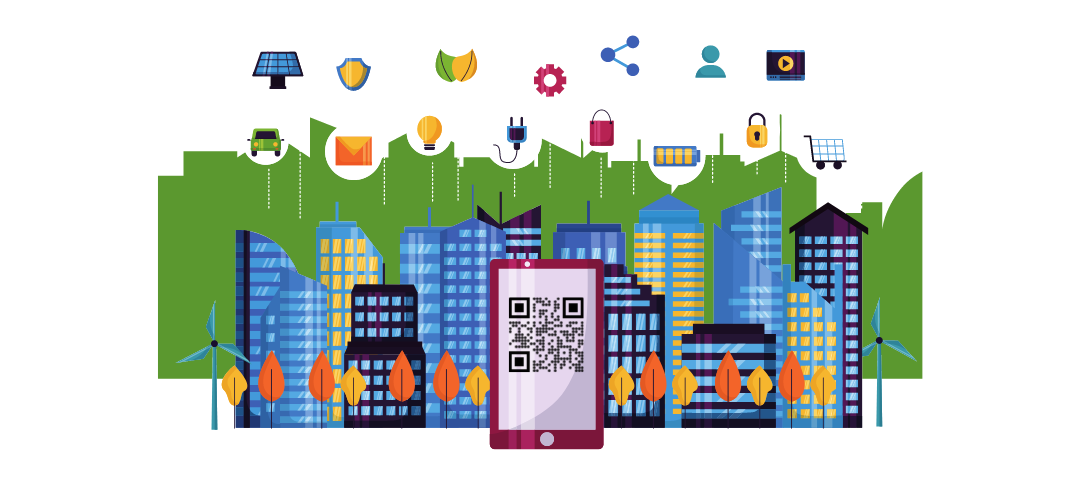As cities around the world embrace the concept of becoming “smart cities,” technology is playing a pivotal role in enhancing urban living. Among the various tools and innovations contributing to this transformation, Quick Response (QR) codes are emerging as key players in fostering connectivity, accessibility, and efficiency. This article delves into the multifaceted role of QR codes in shaping the landscape of smart cities.
Urban Mobility and Transportation
One of the primary applications of QR codes in smart cities is in the realm of urban mobility and transportation. Public transport systems, bike-sharing programs, and ride-hailing services often utilize QR codes for seamless ticketing and access. Commuters can scan QR codes to pay for fares, unlock bikes, or access transportation-related information, contributing to the efficiency and convenience of daily travel.
Interactive City Navigation
QR codes are transforming the way residents and visitors navigate through urban landscapes. Cities can strategically place QR codes on signage, maps, and landmarks, offering users instant access to detailed navigation information. Whether exploring historical sites, locating amenities, or accessing interactive city guides, QR codes provide a user-friendly and engaging experience for individuals navigating the complexities of urban environments.
Public Information and Services
Smart cities prioritize efficient and accessible public services, and QR codes facilitate the delivery of information to residents and visitors. By placing QR codes on public notices, billboards, and government buildings, cities can provide instant access to important announcements, event details, and essential services. This digital approach enhances communication, ensuring that pertinent information is readily available to those who need it.
Waste Management and Sustainability
Sustainability is a key focus in smart cities, and QR codes play a role in waste management initiatives. Cities can implement QR codes on recycling bins and waste containers to educate residents on proper disposal methods. Scanning the QR codes can provide users with information on recycling guidelines, waste collection schedules, and tips for reducing environmental impact.
Enhancing Cultural and Recreational Experiences
Smart cities leverage QR codes to enhance cultural and recreational experiences for residents and tourists alike. Placing QR codes at cultural institutions, parks, and monuments allows users to access multimedia content, historical information, and interactive exhibits. This approach not only enriches the cultural experience but also encourages public engagement with the city’s heritage.
Secure and Efficient Access Control
In areas where security and access control are paramount, QR codes provide a secure and efficient solution. Whether gaining entry to secure buildings, parking facilities, or events, individuals can use QR codes for contactless authentication. This method enhances security protocols while streamlining access for authorized personnel or event attendees.
Retail and Commerce Integration
Smart cities integrate QR codes into retail and commerce for a seamless shopping experience. From digital storefronts to interactive advertisements, QR codes facilitate quick access to product information, promotions, and online purchasing options. This digitized approach supports local businesses and enhances the overall convenience of city living.
Emergency Response and Public Safety
QR codes contribute to public safety and emergency response efforts in smart cities. Placing QR codes on emergency signage, evacuation routes, and public safety announcements ensures that individuals can quickly access critical information during crises. This real-time communication can be instrumental in safeguarding lives and minimizing the impact of emergencies.
Data-Driven City Planning
The data generated by QR code interactions in smart cities is a valuable resource for urban planners. Analyzing user behavior, traffic patterns, and popular destinations provides insights into how residents and visitors navigate the city. This data-driven approach informs city planning decisions, enabling the optimization of infrastructure, transportation systems, and public services.
Conclusion: A Connected and Accessible Future
As smart cities continue to evolve, the role of QR codes will likely expand to encompass even more facets of urban life. From improving transportation efficiency to enhancing cultural experiences and supporting sustainable practices, QR codes are catalysts for creating connected, accessible, and user-centric urban environments. As cities globally strive to become smarter, QR codes stand as a symbol of the technological innovation shaping the future of urban living.

